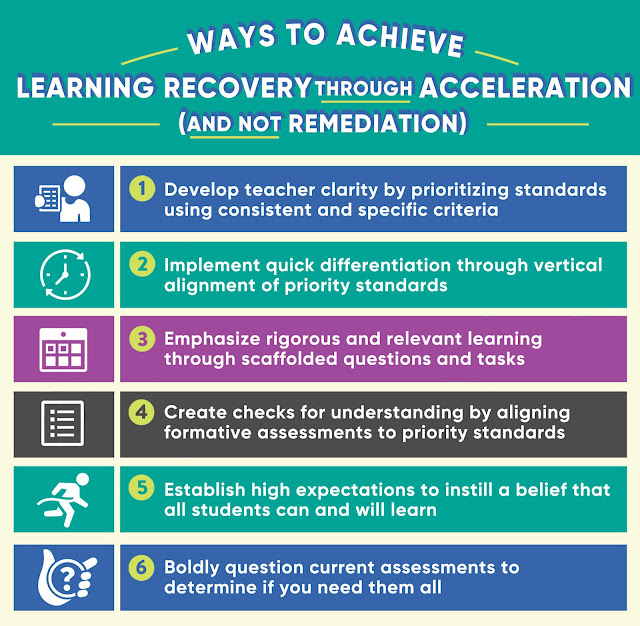There is an emerging sense of relief amongst educators as more and more schools are welcoming back students or that the most difficult year is finally coming to an end. With this excitement comes renewed fears of where many of these kids are academically or will be by the beginning of the next school year. As such, the most common messaging has focused on the impending learning loss epidemic that is about to plague virtually every school. While we know there are and will be challenges with re-entry and assimilation, my concern is how the use of a deficit thinking approach to stereotype kids who, in many cases, have experienced immense trauma will affect them. It’s not their fault that a pandemic occurred.
A more sensitive and pragmatic strategy is to develop systemwide supports for learning recovery through acceleration. Remediation techniques tend to address foundational skills and lower-level standards and concepts that emphasize perceived weaknesses—employing an asset-based approach instead of a deficit model shifts the focus to strengths and equity. So why learning recovery through acceleration as opposed to remediation? Suzy Pepper Rollins provides this take:
The primary focus of remediation is mastering concepts of the past. On the other hand, acceleration strategically prepares students for success in the present—this week, on this content. Rather than concentrating on a litany of items that students have failed to master, acceleration readies students for new learning.
With this approach, as opposed to a deficit thinking, focus on learning loss, districts and schools work to develop a comprehensive plan to determine where their learners currently are to help them get back on track and accelerate their learning. With both a sense of urgency and an array of competing interests trying to advocate for why their way is the best, it is critical not to make the process more complicated than it is. Don’t overanalyze it or be made to think that just a technology solution will do the trick. To accelerate student learning, Kyra Donovan suggests the following:
- Develop teacher clarity by prioritizing standards using consistent and specific criteria.
- Implement quick differentiation through vertical alignment of priority standards so teachers can dip down a grade level if needed but move quickly back to grade-level standards.
- Emphasize rigorous and relevant learning through scaffolded questions and tasks that teach priority standards while allowing immersion in key concepts and skills.
- Create checks for understanding by creating and aligning formative. assessments to priority standards.
- Establish continuous high expectations to instill a belief that all students can and will learn.
- Be bold by questioning current assessments and their purpose to determine if you need them all.
At Aspire Change EDU, we have developed comprehensive learning recovery through acceleration solutions. With the Elementary and Secondary School Emergency Relief (ESSER) Fund, Congress has made money available to school districts to tackle the ongoing impact of the COVID-19 pandemic. The two rounds of funding are primarily focused on learning recovery but can be used for a variety of professional learning needs. The time is now to develop a longitudinal plan. Feel free to email me at any time (esheninger@gmail.com) for more information.

No comments:
Post a Comment